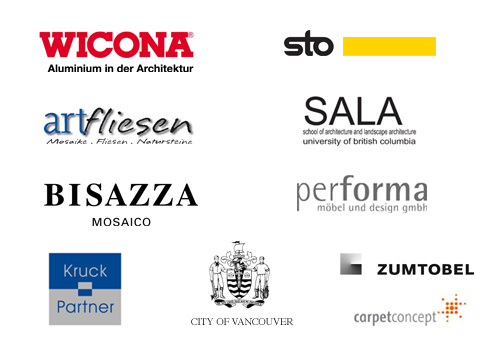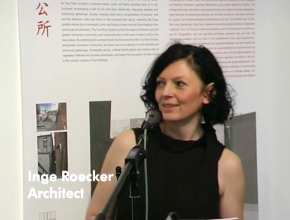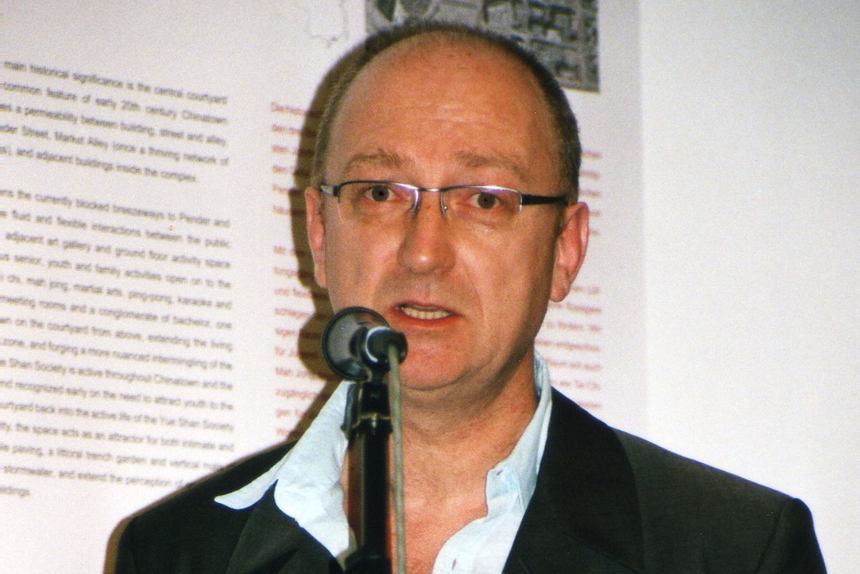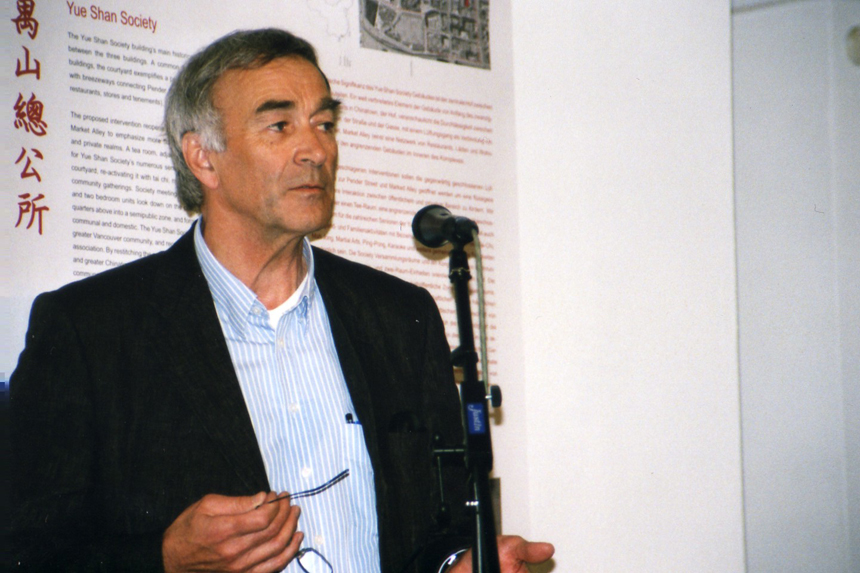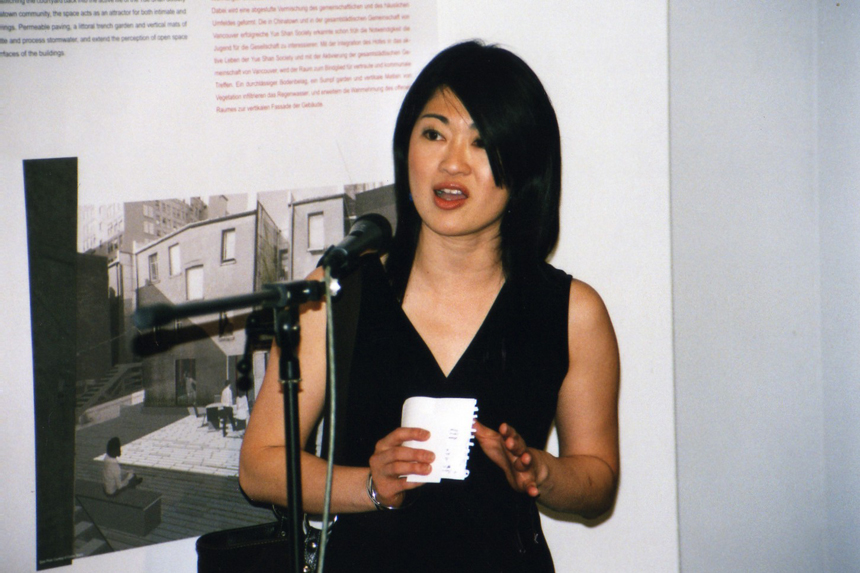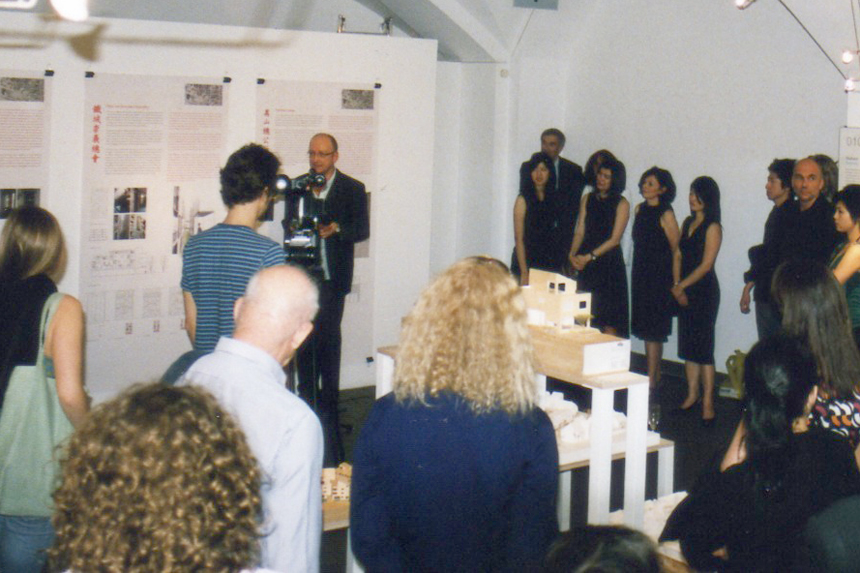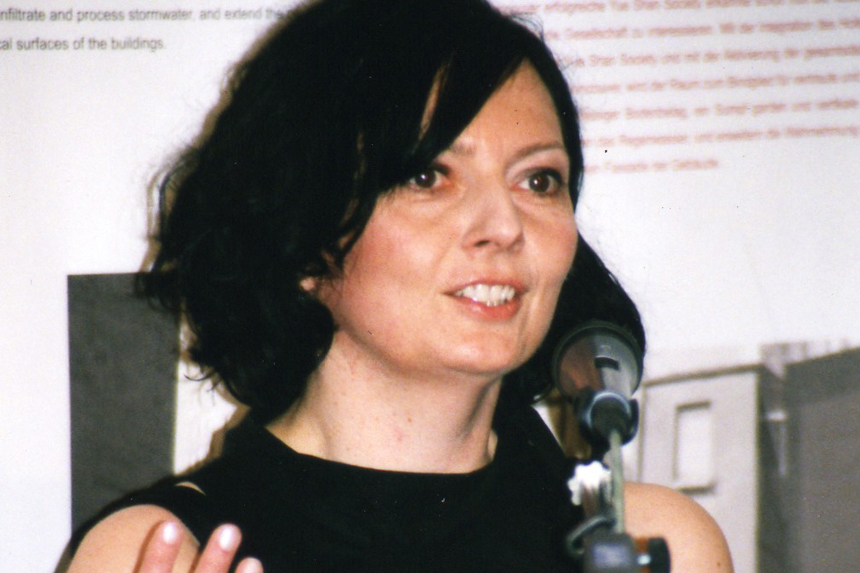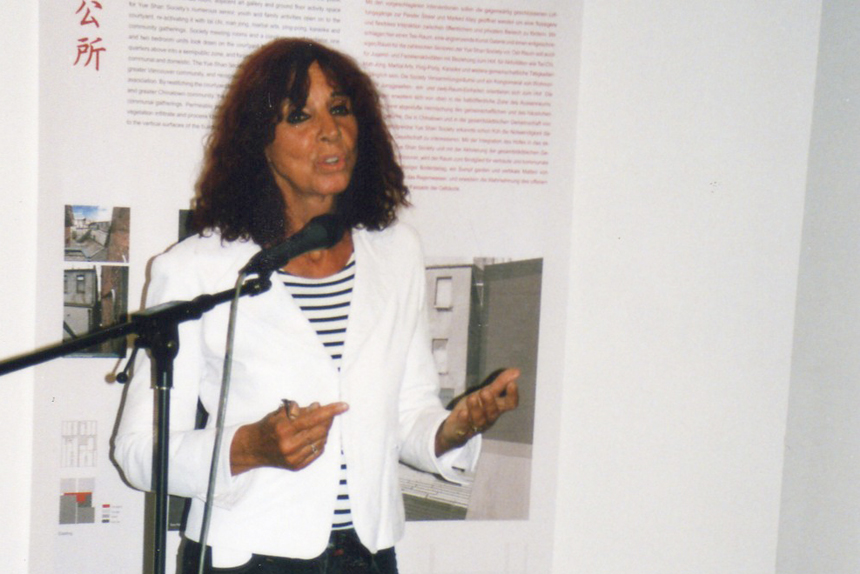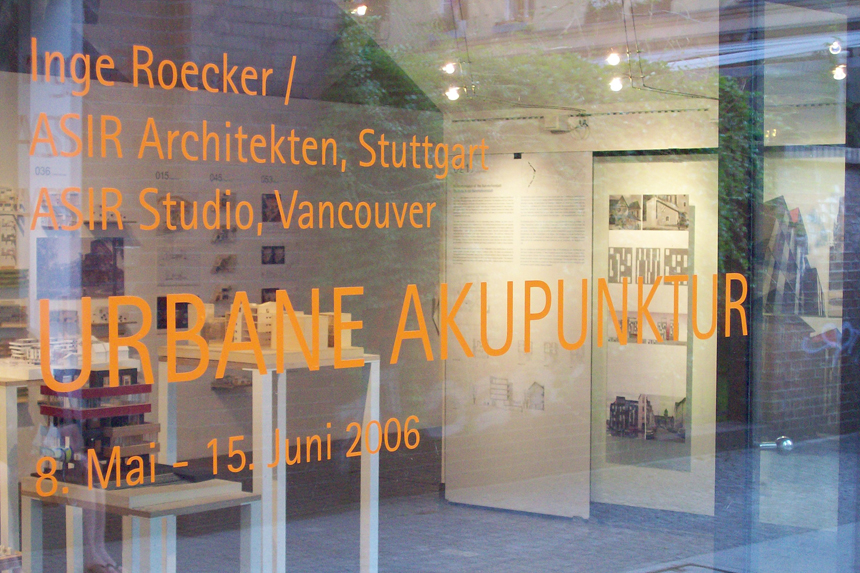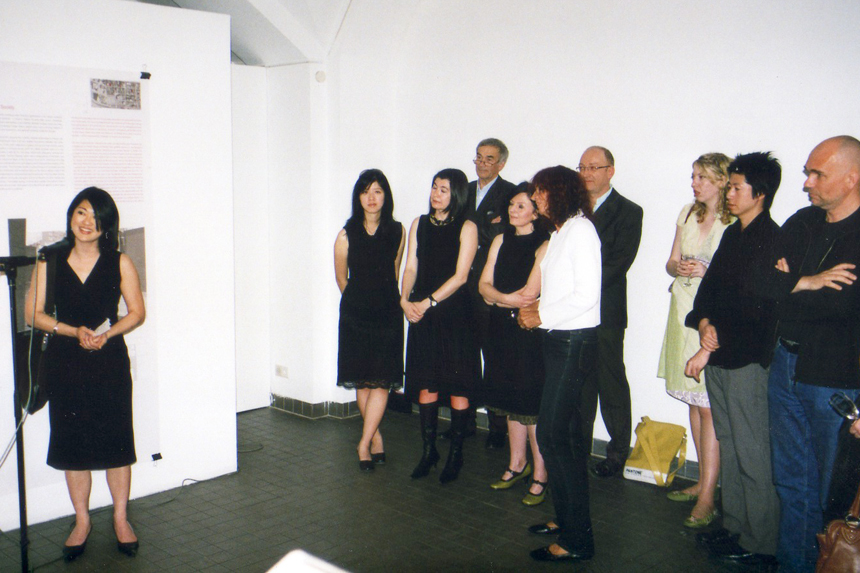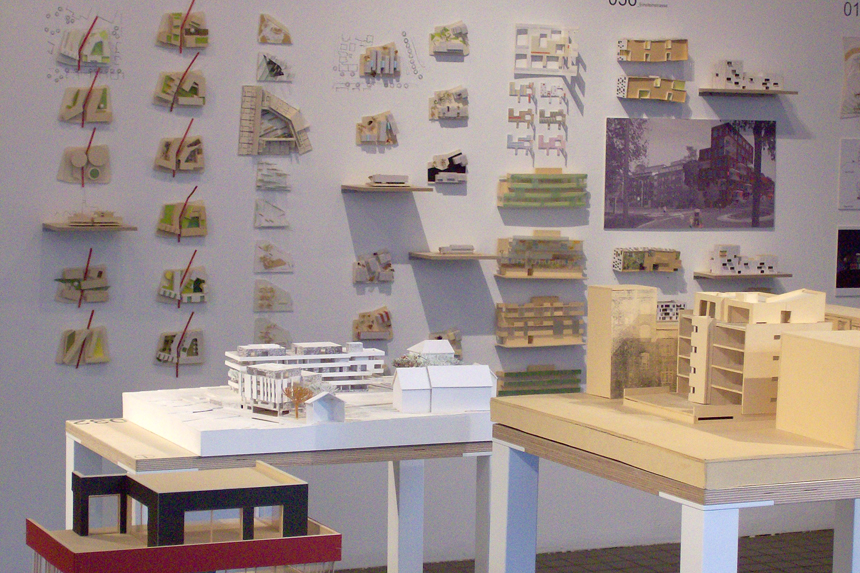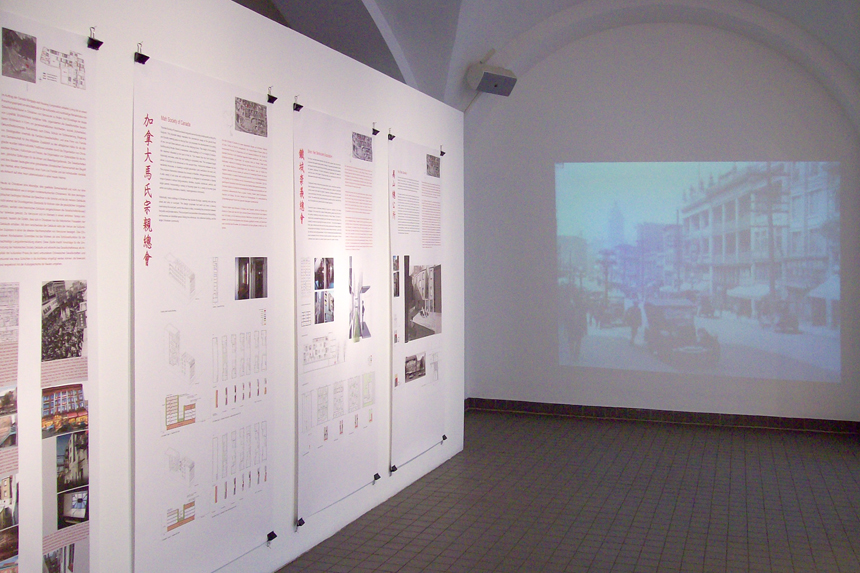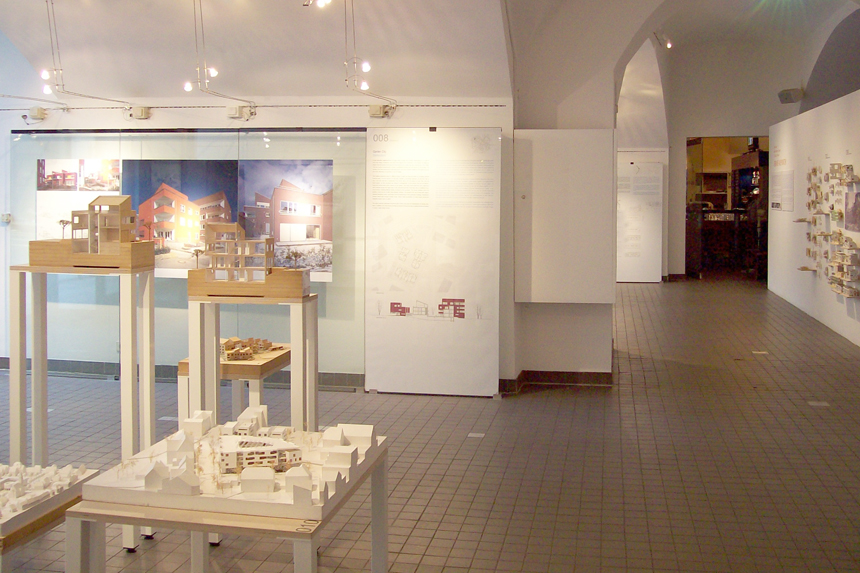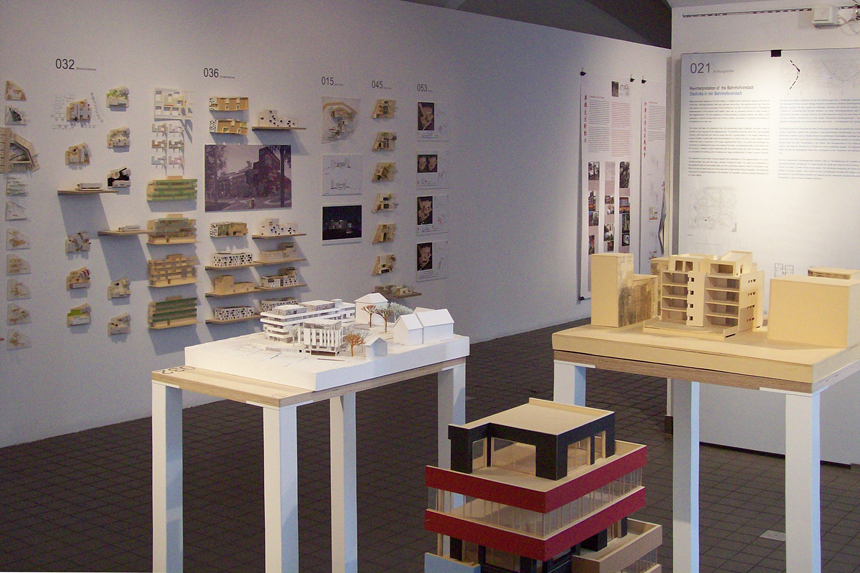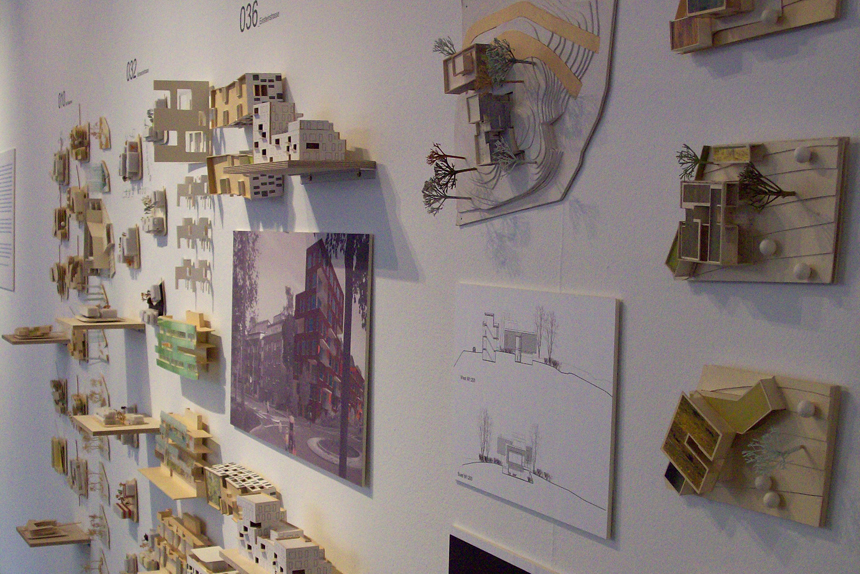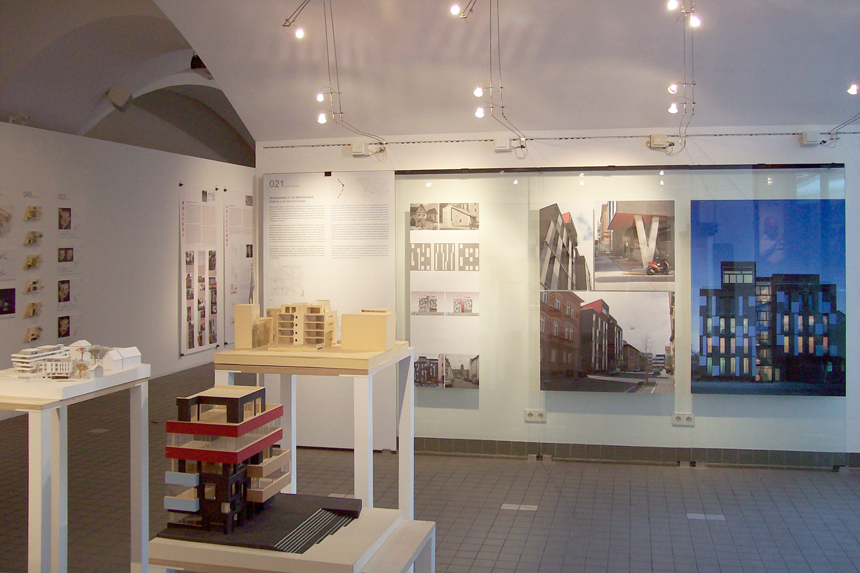Inge Roecker / ASIR Architekten, Stuttgart - ASIR Studio, Vancouver
ASIR Architekten in Stuttgart (2002) and ASIR Studio in Vancouver (2005) were founded by Inge Roecker, who has taught since January 2003 as an assistant professor at the University of British Columbia (UBC) in Vancouver. Originally from Germany, she completed her Master’s of
Architecture in 1999 at the University of Manitoba and worked during the 1990’s for Behnisch and Partner in Stuttgart as a project leader.
At UBC she is currently conducting research and teaching a design studio in Vancouver’s Chinatown, which investigates potentials for preserving the historic Chinatown neighborhood while proposing concrete possibilities for transformations into contemporary uses.
Through models, drawings and video projections, the exhibition presents four buildings and ensembles in Germany as well as a selected research project in Vancouver’s Chinatown. All work is connected to the theme of urban dwelling.
The projects are intended to conceptually and programmatically improve and sustain their surroundings as well as to present innovative solutions for urban living. The chosen projects place an emphasis on the mending of broken urban fabric, thus performing an ‘acupuncture’ on the city.
Two of the projects are situated in the city of Heilbronn and can be seen as an impetus for urban revitalization. The first building is a recently completed, five-story housing project, which manages to address its historic context while asserting a strong, independent architectural language. The fenestration takes its cue from the surrounding context of historical brick buildings yet differentiates itself with uniquely patterned sliding window shutters. Each individual occupant can operate the window shutters, resulting in a variety of exterior visual patterns. As a result, the building user is constantly able to influence the design of the façade.
The second building ensemble is located at a street intersection, which became a strong visual axis due to the implementation of a new streetcar line. The two, five story buildings sit on a common elevated platform and are situated to create a public square at the street corner and a private garden between the two buildings. The larger of the two buildings horizontally alternates housing and office floors. The differences in room depth between the uses allow for a terrace in front of the living units. The second much smaller building differs in its internal organization as the program alternates vertically. Living spaces are oriented toward the private garden while office uses are oriented toward the street. The internal programmatic ordering of each building is reflected by the pattern of the glass mosaic tiles, which gives a strong horizontal emphasis to the first building and a vertical emphasis to the second.
Recently completed in the more suburban context of Biberach is the third ensemble – an inter-generational housing development consisting of three central apartment buildings and two groups of row houses.
The ‘garden-city’ inspired layout, together with the strongly coloured red facades, forms a neighborhood centre point and distinguishes the project from the surrounding context of predominantly banal, single family homes.
The fourth ensemble, currently under construction, lies in the small historic spa-town of Bad Rappenau. Comprised of two building complexes containing different housing typologies, the buildings are structured to create a passage between the train station and the town centre. All ground level floors along the passage include retail uses, helping to re-stitch what was formerly a disconnected urban fabric. On one side of the new passage, 36 assisted-living units for seniors are organized around a courtyard and spanned by a transparent, pneumatic-membrane roof. Hanging curtains of Bourgainvilla plants in the atrium are part of an innovative energy concept, and help to cool and give character to the interior garden space. On the other side of the passage, larger apartments provide housing opportunities for families. The Engineers Schlaich & Bergermann from Stuttgart designed the footbridge, which stitches the new building and the existing town fabric.
These selected German projects were realized by local investor Joachim Kruck and Partner in tight market conditions. With an awareness of sustainable urban development in mind, all building ensembles show that exceptional architecture can be realized under typical economic pressures.
The issues of urban revitalization addressed in ASIR Architekten’s German practice are similar to those addressed in the Canadian project presented. Conducted in Vancouver’s Chinatown, the project selected is a study undertaken in collaboration with Landscape Architect Kelty McKinnon. The study investigates possibilities for converting vacant or underused historic Society (Family Clan) Buildings into market housing opportunities. Avoiding the facadism that plagues many urban revitalization projects in North America, the study seeks to maintain an historic urban fabric while accommodating contemporary living and uses.
Welcome:
Kristin Feireiss, Berlin
Eduard Kögel, Berlin
Aedes Catalogue

Diese Ausstellung wurde ermöglicht mit der großzügigen Unterstützung von:
